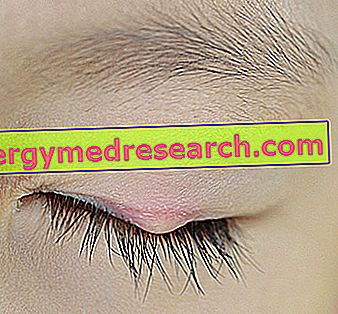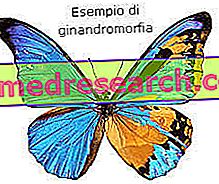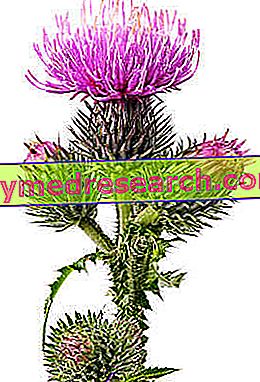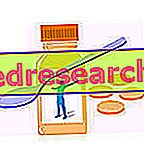Stye is the name of an inflammation of the eyelids. It affects the sebaceous glands of the eyelashes and appears as a kind of solid boil, located in the inner or outer part of the eyelid concerned.

The causes are infectious but it is very frequent in subjects suffering from blepharitis.
The stye is often very evident; it has a red or yellow color (due to the accumulation of pus) and the dimensions vary according to the specific case. The prevalent symptoms are: pain, discomfort, itching and impaired vision (obstacle).
Usually, the stye resolves fairly quickly, but in more severe cases it evolves into chalazion.
What to do
- Prevent the occurrence of the urine, especially if you are aware of an individual or family predisposition (clinical history, blepharitis, environmental factors, contact lenses, etc.).
- Treating the stye:
- Apply hot packs.
- When the stye does not resolve spontaneously (within 2 weeks) or is of a considerable size, go to the doctor, who will:
- Eyelash and follicle removal.
- Alternatively, removal of the entire abscess or cyst that replaced it.
- Use specific drugs for topical or oral use.
- Avoid the spread of the orzaiolo; this can be done by avoiding the exchange of personal items such as: towels, make-up, motorcycle helmet, glasses, etc.
What NOT to do
- Increase the odds of contracting the stye:
- Have poor personal hygiene, especially of the face.
- Use heavy make-up, especially on the eyelid line.
- Use removable eyelash prostheses (false eyelashes).
- Eyelash transplant.
- Change contact lenses or rub your eyes with dirty hands.
- Use clothing, helmets or other items and make-up of dubious origin or used by people suffering from facial infections.
- Bursting the do-it-yourself pipe pusher: this procedure applied without disinfecting before and after the skin increases the chances of recurrence or worsening of the pre-existing pitting. Furthermore, it significantly increases the risk of accidentally damaging the eye.
- Do not go to the doctor in severe cases.
- Avoid, shorten or disregard the advice for the use of medications prescribed by the doctor.
- Promote the dissemination of the orzaiolo by exchanging personal items such as: towels, make-up, motorcycle helmet, glasses, etc.
What to eat
There is no diet that can cure or prevent the stye. However, some nutrients are considered to be real supports for immune defenses:
- Vitamin C or ascorbic acid: it is contained above all in vegetables and fresh fruits, better if acidulous: peppers, citrus fruits, parsley, kiwi, lettuce, apple, chicory etc.
- Vitamin D or calciferol: it is contained above all in: fish, fish oil and egg yolk.
- Zinc: it is mainly contained in: liver, meat, milk and derivatives, some bivalve molluscs (especially oysters).
- Selenium: it is mainly contained in: meat, peach products, egg yolk, milk and derivatives, fortified foods (potatoes, etc.).
- Magnesium: it is mainly contained in: oilseeds, cocoa, bran, vegetables and fruits.
- Iron: it is mainly contained in: meat, peach and egg yolk.
- Polyphenolic antioxidants: they are mainly contained in: fresh fruits and vegetables, but also red wine, seeds, aromatic herbs, tea, roots, medicinal herbs etc.
- Amino acid lysine: it is mainly contained in: meat, cheese, some fishery products and legumes (especially soy).
- Probiotics: they are mainly found in fermented foods such as yogurt, tofu, tempeh, buttermilk etc.
- Omega 3: are mainly contained in: blue fish, some oily seeds and related oils, algae.
What NOT to Eat
There are no less recommended products than others. However, it is recommended to avoid:
- Monothematic diets.
- Vegan diet.
- Diet free of vegetables and vegetables.
- Diets based solely on:
- Cooked foods.
- Preserved foods.
Natural Cures and Remedies
Natural remedies against the stye are few and not too effective. Leaving aside the strangest "popular systems", we will mention only some more relevant ones:
- Phytotherapy: packs of distilled water based on:
- Elderberry flowers.
- Euphrasia.
- Bramble.
- Ayurvedic medicine: according to this current of thought, the stye is caused by constipation, which is why it provides for the administration of Triphala orally in powder form. In addition, an eyewash based on Chandrodaya varti is used.
Pharmacological care
The drugs of choice for the cure of the stye are antibiotic and anti-inflammatory:
- Antibiotics: they are useful for eliminating the bacterial pathogens responsible for the stye.
- Erythromycin, for example Erythrocin®: it is one of the most widely used drugs in the treatment of stye.
- Tobramicina: for example Tobral®.
- Moxifloxacin for example Vigamox®.
- Clindamycin for example Dalacin®.
- Vancomycin for example Levovanox®.
- Anti-inflammatories: they are a palliative and do not affect the triggering cause.
- Paracetamol: for example Tachipirina®, Efferalgan®, Panadol®.
Prevention
- Caring for global personal hygiene.
- Avoid make-up that can somehow predispose to infection.
- Avoid mobile lashes (false eyelashes).
- Avoid eyelash transplantation.
- Always wash your hands before touching your eyes (especially when changing lenses).
- Do not wear clothing for the head or face, helmets, etc. of doubtful cleanliness.
Medical Treatments
As anticipated, the stye can be surgically removed by the doctor:
- Extirpation of the follicle in which the infection developed.
- Drilling of the follicle with a needle or a scalpel making the pus or cyst that replaced it come out and dressing the area.



